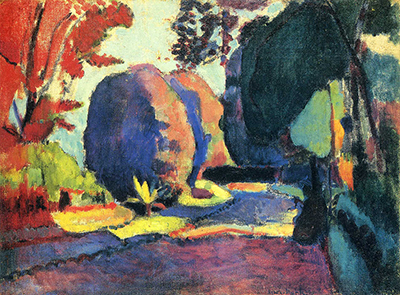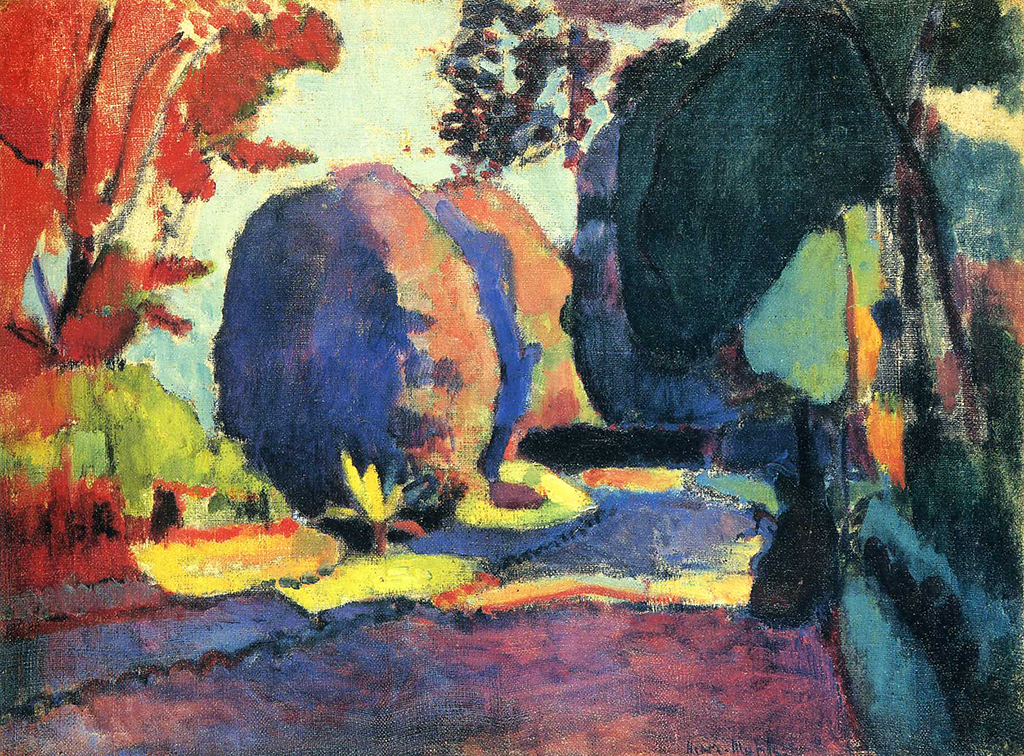Henri Matisse has come to be considered the greatest colourist of the 20th century, and he rivals Picasso for innovative painting. He is the father of Fauvism, the turn-of-the-century break-away-from-tradition style characterised by vivid colours applied in distinctive bold brush strokes.
His Luxembourg Gardens is a compelling example of this technique. Matisse was influenced in the evolution of his daring and forceful new style by Munch, Renoir and Sisley. In turn, he influenced Chagall and Picasso. At the start of the 20th century, Matisse painted various landscapes featuring the lovely Luxembourg Gardens. Although a typical Impressionist genre, he veered away from the Impressionist style and created his own style using a different approach and a diverse logic. He decided to bypass Impressionist charm and come on strong with adventuresome shapes and colours. This new approach is apparent in his Luxembourg Gardens, a vivid landscape painting which conveys a suggestive stained-glass-window effect.
Those lucky enough to visit the glorious Hermitage Museum and enter Room 436 to stand before the "Luxembourg Gardens" by Matisse will probably take an involuntary step forward in an attempt to set foot on the inviting pathway leading into this compelling Fauve landscape.
It is a landscape that shows all the delights of the Luxembourg Gardens, and, bonus point, the viewer gets to see it all through the artist's eyes. And he gives us a different slant on nature. Matisse stated: "What interest can there be in copying nature? It is the feeling that develops between the subject and the artist which is important". And here it is - nature in its appealingly colourful, rather geometrical form. Matisse's grand trees and huge hedges are solid-looking shapes: ovals and wedges and compact splodges of colour. Yes, colour. Colour is the key; it works the magic in the picture.
It confers airiness and sunshine to the pathway, to the trees and to the flowers. Matisse once hinted: "There are always flowers for all who wish to see them". The artist's bold and beguiling use of colour, blending and contrasting bright and dark hues, deftly brings this pathway through the gardens alive; a perennial invitation to stroll in the enthralling world of Henri Matisse.
The fascinating Luxembourg Gardens, painted in 1901, hangs in the Hermitage Museum of Saint Petersburg, where it has been since 1948. Before that, it was in the State Museum of New Western Art in Moscow; it originally came from the Sergei Shchukin collection. Measuring 59.5 x 81.5 cm, oil on canvas, its genre is pastoral; it falls under the Fauvism period.





